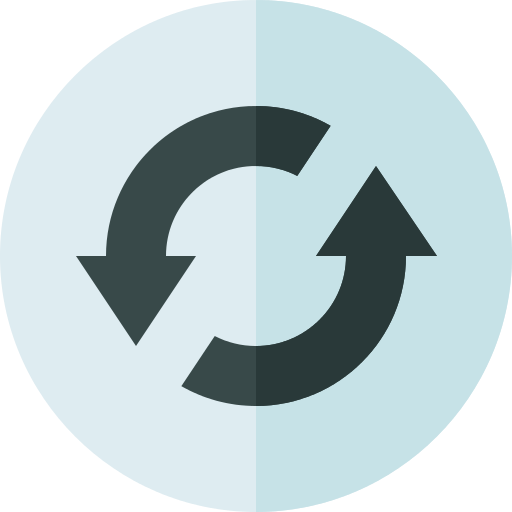AI-Driven Skill Gap Analysis: Getting Ready for the Future Job Market
Businesses are struggling to find qualified talent, and employees risk falling behind, missing out on promotions, or even losing their jobs.
And if you're looking for work, it can be tough to stay relevant in today's job market; this is where needed skills gap analysis helps in identifying the necessary skills. . The main culprit? You know it—AI.
AI might be widening the skills gap, but it could also be your secret weapon to stay relevant. AI can help you pinpoint exactly what your skill gaps are and what right critical skills you need. , provide a clear roadmap to closing them, and even equip you with the tools to do so.
The first step is running your own AI-driven skill gap analysis, so you can future-proof your career path and make sure you're aligned with what employers are looking for.
What's Causing the Skills Gap?
If you're worried you might have a skills gap, let me reassure you that it's not your fault; many people are uncertain about the skills possessed. .
The skills gap isn't being driven by people like you not learning fast enough, it's because the world of work is changing so quickly. AI, automation, machine learning, and robotics have already completely changed how many industries operate, highlighting the need for critical thinking skills .
That rate of change isn't going to slow down. The AI market alone is projected to grow by at least 120% year-on-year for the foreseeable future.
All these changes can be pretty overwhelming, whether you're currently employed, looking for a change, or trying to find work. Companies are asking a lot these days: they expect you to have a mix of specific skills, both technical and soft.
But asking everyone to be a whizz kid on things like AI usage and data analysis while being a hyper-adaptable superstar with dynamite communication and problem-solving skills can seem like a tall order, especially amidst a skills shortage that affects your competitive edge. .
What makes this even more challenging is that every industry faces unique demands. For example:
- Healthcare professionals must integrate digital health records, telemedicine systems, and AI diagnostic tools, while maintaining empathy and bedside manner.
- Marketing teams need to blend creativity with data analytics, marketing automation, and social media algorithms.
- Manufacturing workers are expected to understand robotic systems, IoT devices, and predictive maintenance.
And for technical careers like software development, cloud engineering, or cybersecurity, For technical careers like software development, cloud engineering, or cybersecurity, staying updated can feel like a full-time job itself, emphasizing the importance of employee development.
But you don’t need to do all the work alone: An AI-driven skills gap analysis can identify your key weaknesses so you can focus your efforts on relevant training programs that enhance your training effectiveness. .
How AI Can Help You Identify Your Skill Gaps
Trying to analyze your own strengths and weaknesses can be tough, especially for software developers, engineers, and other constantly evolving careers. It's natural to have biases when you try to measure skills without an objective approach to identify skill discrepancies. . But one thing AI is great at is staying objective.
Furthermore, it can sort through massive amounts of data and spot patterns much quicker and more effectively than you probably can.
You can use AI skills gap analysis tools to analyze your performance reviews, past training, and career experience To create a profile of your employee's actual skill level, strengths, and weaknesses, and then use AI to paraphrase the findings into something actionable that aligns with your business goals.
At the same time, AI can analyze patterns in terms of the job roles that are in demand, or the skills and competencies most in demand for the industries and roles you want to work in.
Then, AI can cross-reference these two data sets to identify what you need to work on.
Specific AI-driven tools you can try today:
- LinkedIn Skill Assessments & Career Explorer: See where your current skills rank relative to peers and identify in-demand roles matching your abilities.
- Eightfold.ai Talent Intelligence: Uses advanced matching algorithms to align your resume with future-proof roles.
- Gloat’s AI Career Pathing: Maps out possible career trajectories, highlights skills gaps, and recommends targeted learning content.
For example, a UX designer who used LinkedIn’s Career Explorer discovered a sharp increase in demand for skills in accessibility design. She focused on earning WCAG (Web Content Accessibility Guidelines) certification, which directly led to a promotion within six months.
And it’s not just individual success stories: A 2023 IBM study found that existing employees who proactively reskill their skills employees. with AI insights during this digital transformation are 30% more likely to earn promotions or new opportunities within a year, compared to those who don’t.
Even if you aren’t confident with AI tools, many modern platforms are designed for non-technical users. They guide you step by step—from scanning your resume or LinkedIn profile to generating your skills gap analysis and suggesting next steps like online courses, certifications, or workshops.
Benefits of AI-Driven Skills Analysis
Before jumping into any learning plan, it’s worth understanding why AI-driven skills analysis can be a game changer. Here’s what makes it uniquely valuable compared to traditional self-assessment or generic career advice:
- Speed and scale: AI can analyze years of experience, education, and performance data in seconds—saving you weeks of manual research.
- Personalization: AI tailors recommendations to your unique career goals and current skills, unlike one-size-fits-all job boards or outdated career guides.
- Objectivity: We all have blind spots; AI can provide unbiased insights by comparing your profile to millions of data points on job market trends.
- Confidence boost: Knowing your strengths—and what employers actually value—can give you clarity and motivation to act strategically.
- Future-proofing: AI tools are updated in real time with new skills emerging across industries, so you’re less likely to miss critical trends.
By harnessing AI, you not only discover where you stand today but also gain a dynamic plan By harnessing AI, you not only discover where you stand today but also gain a dynamic plan to develop your actual skill levels to stay ahead tomorrow.
Common Mistakes When Closing Skills Gaps
Even with the best tools, it’s easy to fall into traps that waste time or effort. Avoid these common mistakes to make your upskilling journey smoother and more effective:
- Chasing hype over relevance: Learning skills just because they’re trendy (e.g., blockchain, NFTs) can divert attention from what actually advances your career in your field.
- Neglecting soft skills: Technical skills matter, but employers consistently rank communication, adaptability, and teamwork among the top reasons for promotions.
- Spreading yourself too thin: Trying to master everything at once can lead to burnout. Focus on one or two priority areas based on your AI skills gap analysis.
- Ignoring feedback: Whether from AI assessments or human mentors, overlooking constructive criticism can stall your growth. Regularly revisit your plan to adjust and improve.
- Failing to practice: Reading or watching tutorials isn’t enough—applying new skills in real-world projects or simulations cements them in your toolkit.
By steering clear of these pitfalls, you can maximize your investment of time and energy—and build a skill set that truly aligns with future opportunities.
How to Upskill Using AI
Your use of AI to secure Your use of AI to secure your place in the future job market doesn't have to just stop at identifying your skill gaps. It can also help align your skills analysis with your business strategy objectives that align with broader business objectives. .
In fact, AI-driven platforms can take your upskilling journey several steps further. They can analyze your existing skills, compare them with industry benchmarks, and automatically recommend courses, tutorials, or interactive projects to bridge the gap.
Beyond custom learning programs, there are AI-powered learning assistants and virtual career coaches ready to support you every step of the way. They can provide real-time feedback on your progress—whether you're practicing new technical skills or refining soft skills like communication and leadership.
With personalized career advice, these virtual coaches can simulate interview scenarios, offer instant coaching tips, and help you strategize your next career move. This data-driven approach means you're not just passively consuming information, but actively engaging with content that evolves as you grow.
Not to mention, there's a plethora of useful AI-aided software that solves a particular issue, from paraphrasing tools for better emails to creating whole new molecules that far surpass nature's creative capabilities. Depending on your skillset, there's 100% an AI tech stack that'll transform at least some parts of your workflow.
- Duolingo Max, an AI-enhanced language learning app, uses GPT to provide natural conversation practice and real-time corrections.
- Coursera’s Skills Dashboard now integrates AI to suggest courses aligned with the hottest skills in your industry.
- LinkedIn Learning’s Skill Evaluations use AI to recommend microlearning paths customized to your performance.
Beyond upskilling platforms, AI can also support you in the day-to-day challenges of your job. Tools like Grammarly or Wordtune enhance your writing, while Notion AI can help you plan and automate parts of your workflow.
For developers, GitHub Copilot accelerates coding with AI-powered suggestions, and for researchers, tools like Elicit can summarize academic papers or help you generate hypotheses.
But remember: while AI can accelerate your learning, it’s important to be aware of privacy concerns (e.g., sensitive data used in AI tools) and algorithmic bias. Always review what data a platform collects and how it uses it.
For example, some AI tools retain your input data for training purposes—something that may not be ideal if you’re sharing proprietary or personal information.
Combining AI Tools With Human Guidance
To get the most out of AI-driven tools in closing your skill gaps, you'll need a strategic approach. Start by using AI insights to address skill gaps and build a learning plan that focuses on the most valuable skills for your career.
You can then decide what level of formal education you need, like courses and professional development programs, how much informal education can assist this, like networking and mentorship, and how much needs to be self-driven.
AI is a fantastic tool, but it can't replace human intuition, creativity, or empathy. Mentors and instructors provide context, share real-world experiences, and help you stay motivated.
For example, AI might tell a software engineer they should rely on a translation API, but a human mentor will be able to tell them how and why it needs to be applied based on their lived-in experience.
AI tools probably won't be able to do everything. You need to combine the tools with human connections. You can join professional communities, attend networking events, and find mentors to guide you through your career journey.
What's Next? Future Trends in AI and Skills Development
While some estimates indicate AI is to increase business productivity by as much as 40%, it's important to remember that AI isn't just changing jobs—it's creating entirely new ones that address the workforce's skill gaps and create a skilled workforce. . Skills like prompt engineering and ethical LLM oversight are becoming increasingly important.
Meanwhile, industries like quantum computing and biotechnology will require a mix of technical and sector-specific expertise.
To stay ahead, you need to keep an eye on industry reports, explore AI literacy programs, and experiment with new tools. Being being proactive for a competitive advantage is the key to success—the people who embrace lifelong learning will be the ones who thrive in this rapidly changing landscape.
While some estimates indicate AI could increase business productivity by up to 40%, remember that AI isn’t just changing jobs—it’s creating entirely new ones. Emerging roles like:
- Prompt engineer: Crafting effective prompts for generative AI systems.
- AI ethicist or auditor: Ensuring ethical and fair AI deployments.
- AI trainer: Teaching AI systems to better understand specialized datasets.
Beyond AI-specific roles, industries like quantum computing, green energy, and biotechnology will require new blends of technical, analytical, and sector-specific expertise. For example:
Beyond AI-specific roles, industries like quantum computing, green energy, and biotechnology will require new blends of technical, analytical, and sector-specific expertise.
For example:
- Quantum computing roles are expected to combine physics, advanced math, and software engineering.
- Green tech jobs increasingly demand knowledge of AI-powered simulations for energy efficiency.
- Biotech is adopting AI for drug discovery, creating opportunities for professionals who can bridge biology, data science, and ethics.
It’s also worth noting that soft skills will become even more important in an AI-dominated future. According to the World Economic Forum, analytical thinking, creativity, resilience, and emotional intelligence will remain among the top in-demand skills.
To stay ahead, keep an eye on reports from McKinsey, PwC, and industry-specific think tanks, explore AI literacy programs, and experiment with emerging tools. Being proactive is the key to success—the people who embrace lifelong learning will be the ones who thrive in the future workforce. in this rapidly changing landscape.
How to Start Today
Here’s a quick, practical action plan you can follow to turn these insights into results:
- Choose one AI skills analysis tool (e.g., LinkedIn, Eightfold, or Gloat) and run your first self-assessment.
- Research the top three in-demand skills for your target industry by checking job postings, industry reports, or LinkedIn Trends.
- Schedule one hour this week to learn or practice a new skill you identified as a gap.
- Reach out to a potential mentor on LinkedIn, in a professional association, or at a networking event.
- Join an online community aligned with your career goals—Reddit forums, Slack groups, or industry-specific communities can keep you informed and motivated.
Final Thoughts
Navigating the future job market isn’t just about working harder—it’s about working smarter. AI-driven skill gap analysis gives you insights to stay relevant and competitive in an unpredictable world, which makes the skills gap analysis important.
But while AI can point you in the right direction, it’s up to you to take action and build the skills that will secure your place in the evolving job market.
The best approach?
Combine AI-driven learning with human mentorship, ongoing community engagement, and proactive self-reflection. The job market will keep changing, but the professionals who stay curious, adaptable, and eager to learn will always stay ahead.
Don’t wait—take 30 minutes today to identify one skill gap and commit to closing it with AI’s help. The future is yours to shape!



